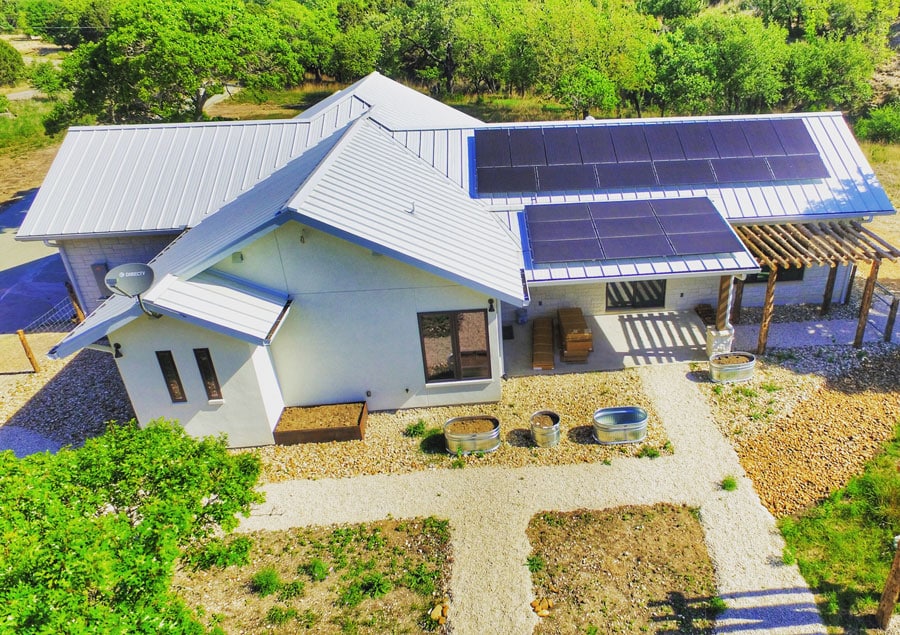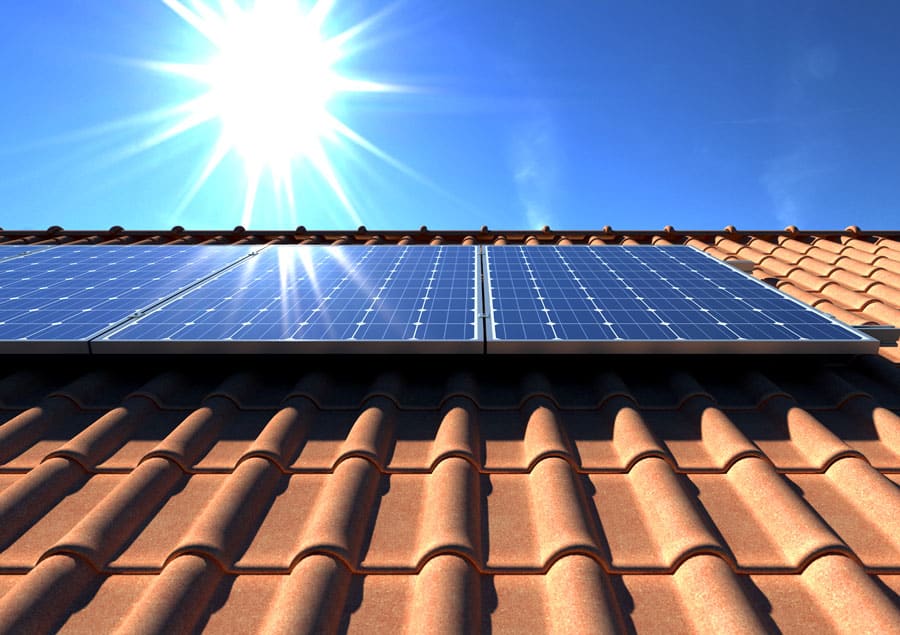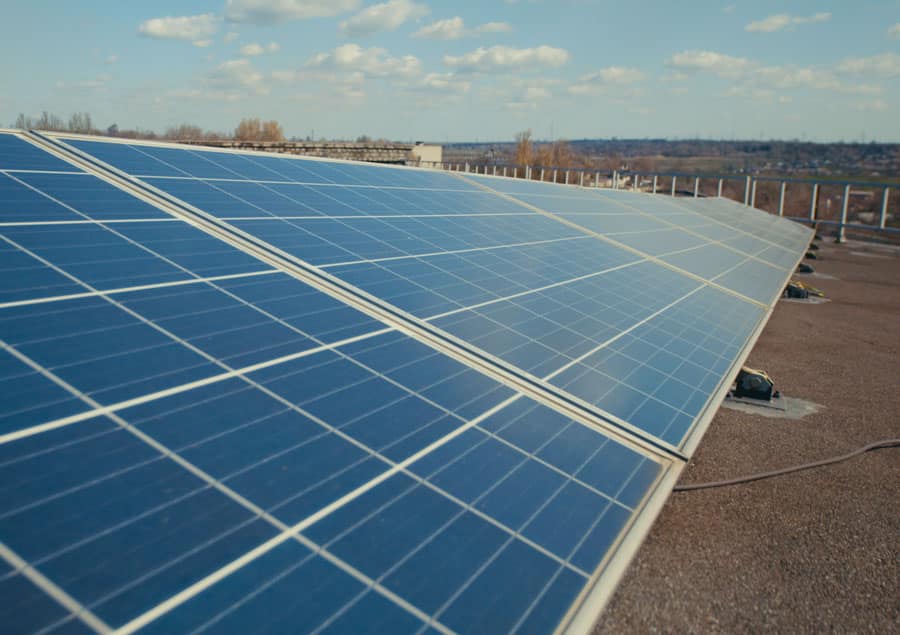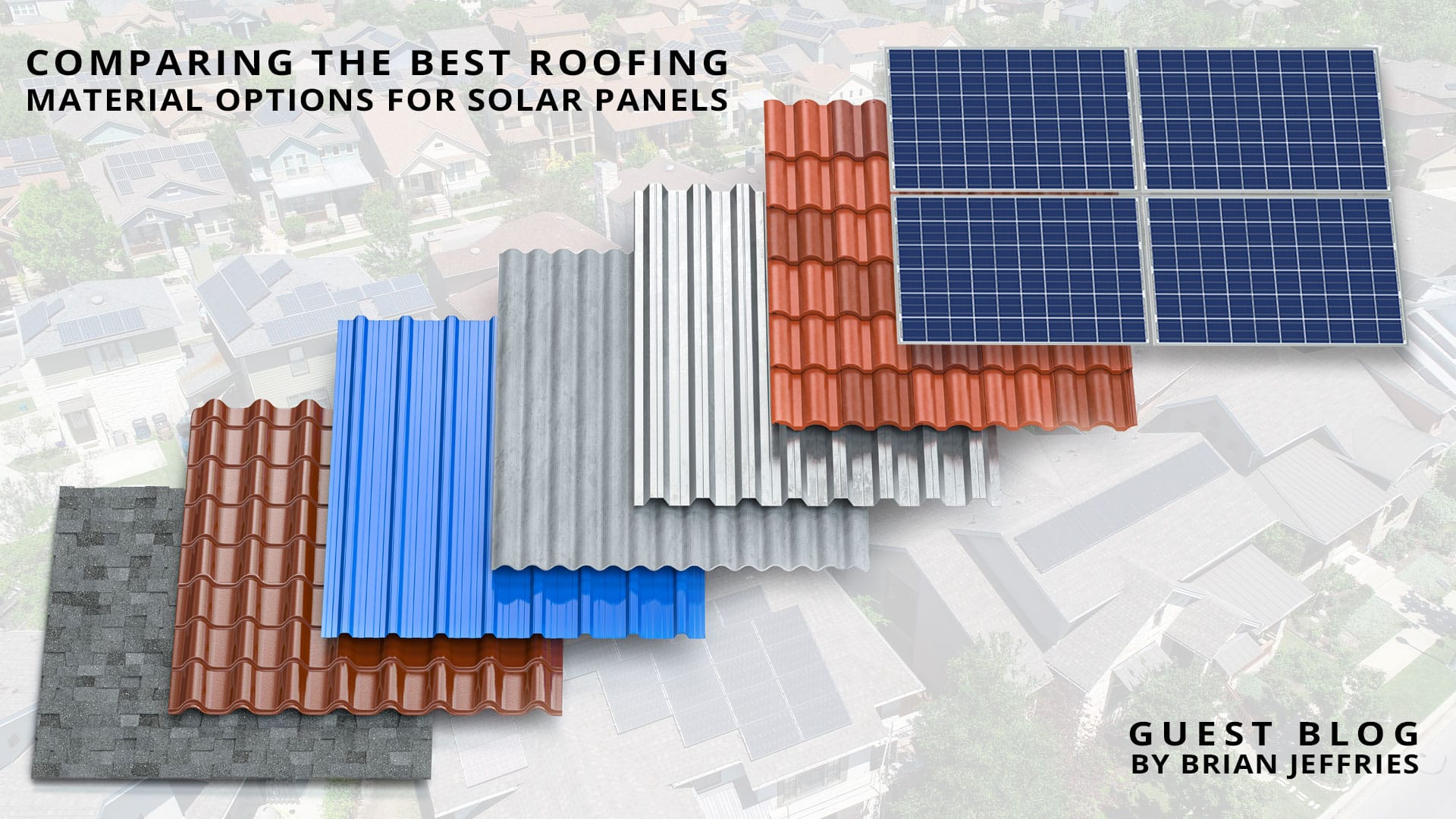Comparing the Best Roofing Material Options for Solar Panels
Solar panels are more common than ever nowadays. Innovations in solar technology rendered these panels more widely accessible to the general public. Also, the ever-increasing need for eco-friendly products has created a demand for solar tech that is hard to miss. You can now find solar panels on many residential homes and buildings across the country, but not every roof is best suited for solar panels.
Some roofing materials work better than others when it comes to accommodating them, so in case you’re looking to install solar panels on your home, let’s take a look at the best roofing materials for doing so.
 1. Asphalt
1. Asphalt
If you don’t have the space for a ground-mounted solar panel setup, you’ll likely have to put them on your roof. The roof is the best place for solar panels anyway because it’s less likely to be covered by shade from trees or other buildings.
Asphalt shingles are the most common type of roofing material and luckily enough, they happen to work wonderfully with solar panels. The typical asphalt shingle is both durable and flexible enough to withstand the weight of a solar panel setup. The process of installing solar panels on an asphalt shingle roof is very basic.
First, studs are drilled into the surface of the roof and the solar panels are mounted on them. Then, the spaces between the studs and your shingles are covered with flashing in order to prevent any water from leaking into your roof. It’s a very quick process and one of the easiest for solar panel installers to complete.
 2. Metal
2. Metal
Metal roofs are another type of roofing that works excellently with solar panels. Especially if your metal roof has standing seams, the installation process is rather simple. The solar panels are usually attached to the standing seams themselves without any drilling required.
This prevents the need for additional flashing and also reduces the overall cost of labor. Metal is also one of the best fire resistant roofing materials out there because it’s completely non-flammable. This is an extra bonus in the event that something goes wrong with your panels and they catch fire.
 3. Tile
3. Tile
Concrete, slate, or clay tiles work just fine with solar panels. Wherever the feet of the solar panels are going to be installed, you’ll have to have the tiles in that area removed but this is easily done and not a hindrance to the installation process at all.
The cost of installing solar panels on these types of roofs is a bit higher because of some of the extra labor involved, but when installation is complete you can expect your roofing and solar panels to last for a long time afterward.
*Not all solar installers are able to install on tile roofs, but NATiVE Solar is;)
 4. Tar and Gravel
4. Tar and Gravel
Tar and gravel roofs are similar to asphalt but usually tend to be at a much flatter angle. This can require some extra hardware in order to tilt the panels to a 30-degree angle and keep them there, but this doesn’t usually drive up the cost of installation very much.
Another reason why tar and gravel roofs tend to be great for solar panels is that they have extra layers of asphalt which act as valuable support for the panels themselves. This extra asphalt also goes a long way towards preventing leaks and cracks in your roof.
Other Considerations When Installing Solar Panels
Aside from the type of material that your roof is covered in, there are other things to consider when installing solar panels. These panels can be installed on pretty much every type of roof and roofing material, but some materials aren’t as well suited for the job. For instance, can solar panels be installed on a flat roof?
Cedar shake shingles, for example, are incredibly fragile and tend to break during installation. They are also not very waterproof and are a massive fire hazard. Fires can sometimes break out on roofs with solar panels attached to them if the panels weren’t installed properly or have been damaged in some way.
For this reason, we recommend going with 1 of the 4 options listed above in order to ensure maximum durability and safety. The angle of your roof can also play a part in the difficulty and cost of installation.
Oddly enough, slanted roofs are preferred for solar panels because most panels need to be tiled at about a 30-degree angle to facilitate maximum energy production. Flat roofing can still work, but it usually requires additional hardware to keep the panels tilted properly.
These 4 Roofing Options Mesh Very Well with Solar Panels
You can’t go wrong with any of the 4 options we’ve listed here. Remember to avoid real cedar shakes because of their fire safety concerns, and instead opt for either an asphalt roof, metal roof, tar and gravel roof, or a metal roof. When installed correctly on the proper material, solar panels can last for years and save you a ton of money on your energy bills.
Brian Jeffries is the content director for the Innovative Building Materials blog and a content writer for the building materials industry. He is focused on helping fellow homeowners, contractors, and architects discover materials and methods of construction that save money, improve energy efficiency, and increase property value.

































Leave A Comment